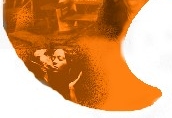


| Course M, 2:30-5:20 W, 2:30-4:20 Thomson 125 |
| Instructor K. Gillis-Bridges Padelford A305 543-4892 MW, 1:00-2:20 |
| Page last updated 11/17/02 |

Grading Criteria for Role-Plays
Group members will receive 90 points for the in-class role-play and 10 points for the follow-up memo. While group members will receive the same number of points for the in-class component, they will be graded individually on the memo. For the in-class role-play, I will assign 0-15 points in each of the following categories, with 0 representing a missing element and 15 representing exceptional execution of the criterion.
- Significance: The role-play addresses issues that contribute to the class’s understanding of the filmmaker and/or her film(s). The scenario does not simply offer biographical or production details, but gives insight into the reception and critiques of the director and her films; the contexts that influence the director and her works (historical, industrial, economic, cultural, etc.); cinematic strategies employed for specific purposes; and/or interpretations of cinematic codes at work in the director’s films.
- Thoroughness: The role-play explains and explores the issues it raises.
- Research: The role-play demonstrates use of relevant research to construct characters, situations, motivations, and/or conflicts.
- Creativity: The group adapts research into a role-play format in a creative manner; the scenario is entertaining, and research is turned into dialogue and action appropriate for the character(s).
- Delivery: The group keeps the role-play within the time limit. Actors project their voices loudly and clearly. The situation presented in the role-play is clear—the audience should have no questions about who and what the group is representing. Group members remember their lines, or, if the role-play is improvised in whole or part, there are no undue lags in dialogue.
- Script: The group has a written text (submitted to teacher) with characters identified and the parameters of the story sketched out. The group can turn in a complete script with dialogue and stage directions. If the role-play is improvised in whole or part, the group will submit notes that delineate the characters, situation, and conflict.
- description of the writer’s contribution to the role-play
- listing of the sources used for the role-play
- explanation of why the group chose to highlight particular issues in the role-play
I will deduct points from memos that lack one or more of the components above.